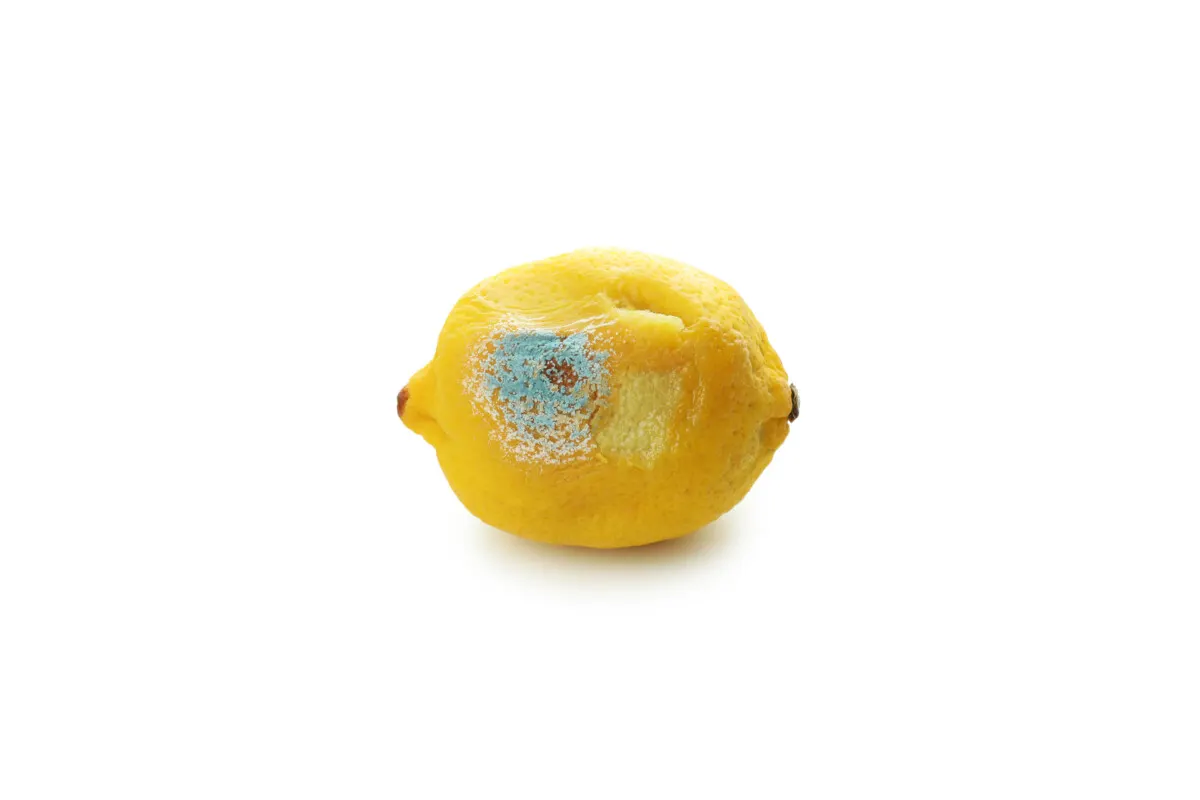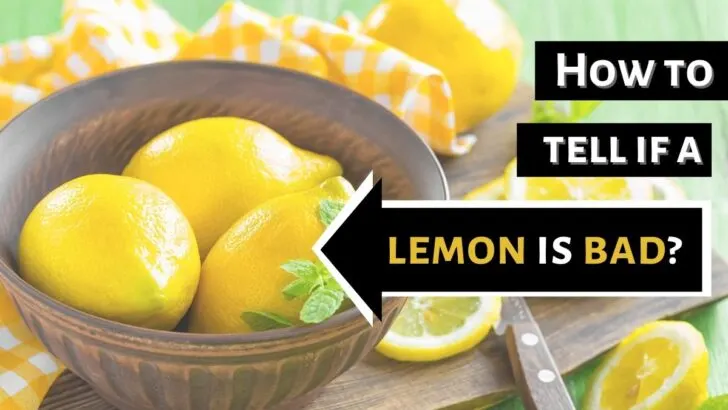Whether it was a bulk purchase or a good harvest, having extra lemons on hand is always a good thing. But what if you accidentally stashed them away in the drawer and have just come across them a week or two later – are they still good to eat?
Fresh lemon is vividly yellow and firm, with a zesty smell and citrusy aroma. However, lemons can go bad quickly if not stored correctly.
Bad lemons tend to be shriveled and might have brownish-green spots. Once the lemon wrinkles and loses its citrusy taste and smell, it has likely gone bad and should be discarded.
That being said, here are a few other things that you should keep in mind before discarding your stash of beloved lemons!
4 Indicators That Lemon Is Bad
Color Change
As mentioned above, fresh lemons are bright yellow evenly throughout their rind. Lemons becoming lighter or darker indicates that they have started to go bad.
Dark brown and greenish spots will appear and the lemon would look bruised. Furthermore, lemons that appear fuzzy have started to grow mold and so should be discarded immediately.
The Wrinkled Or Slimy Texture
Lemons that have wrinkled and dried up have no moisture left in them. Wrinkled lemons would be stiff and shrink and have likely gone bad.
On the other hand, soft lemons do not necessarily mean that they have to be thrown out. It is still usable by cutting the soft parts and using the rest of the lemon.
However, if many soft spots start forming and the rind feels slimy then they are mostly unusable.
Some lemons might also form a powdery texture on them, which is an indication of mold formation and should be discarded straight away.
Smell Change
The zingy aroma of the lemons is one that most people are familiar with, thus it is easy to notice if the lemon’s smell is off-putting. If so is the case, it is better to play safe and toss them right away
Mold Formation
Mold would form on lemons usually when they are left cut up. But as discussed earlier mold could also form on the rind of a lemon.
This type of mold is called penicillium, which especially affects citrus fruits. In either case, the lemon has to be discarded.
What Happens If You Eat a Bad Lemon?
It is always recommended to maintain eating safety and avoid consuming spoiled foods.
However, if you accidentally ate a bad lemon slice for any reason, you most likely won’t show any signs.
For lemons with mold formation, unless you are not allergic, it will not often pose any problems unless you eat them in large quantities.

What Does A Spoiled Lemon Taste Like?
A lemon would slowly lose its citrusy, sour, and tangy taste as it gets spoiled.
If you are not confident about using your lemon, you can cut it open and taste test a small portion of it. If the taste is bland, it is your choice to throw it away or use it, but the lemon would not be considered fresh.
Are Lemons Still Good If They’re Soft?
Lemons with some small soft spots are safe for use.
You can simply cut the soft parts off and utilize the rest of it, but if its smell and taste have faded or it has become slimy and squishy it is best to toss it away.
What Can You Do With A Lemon That Is Getting Spoiled?
Lemons have vast benefits and are used not only as food but in other applications such as polishing and cleaning. Lemons that are getting spoiled can be used for drinks, cleaning or even cooking.
Here of course we are not discussing moldy or wrinkled stiff lemons but those that have some brown patches.
Some uses for lemons that are getting spoiled are:
Storing Lemon Juice
You could squeeze the juice of lemons that are not yet spoiled from the inside and refrigerate it for later use. These can be used in making lemonades or in recipes that require lemon water.
Preserving Foods
Some foods turn brown when cut such as apples and avocados. They can be preserved by applying lemon juice over the cuts. The citric acid in this lemon juice helps restrict the oxidation process that turns these fruits brown.
Cleaner
Lemons can be made into amazing DIY cleaners as they have good antibacterial properties. You can use your old lemons by squeezing them into a bottle and then adding vinegar.
This would eliminate bacteria and easily wipe the toughest stains. This can be used for cleaning cutting boards, blenders, kitchen countertops, etc.
Deodorize Your Garbage Disposal
Lemons can be cut into wedges and thrown into your garbage disposal to help deodorize and get it sparkly clean. Lemons that have gone soft are best for this.
Remove Soap Scum
Simply blend the lemons and mix them with salt and baking soda to create a sandy mixture. Scrub away the soap scum to get back your long-lost surfaces!
Final Words on Lemons Going Bad
All in all, lemons that have gone bad can be easily recognized from those that are still fresh due to changes in their color, texture, taste, and aroma.
Lemons start losing their citrus aroma as they turn bad. However, some lemons, despite looking spoiled, are still usable unless they are extremely soft or have formed mold.


